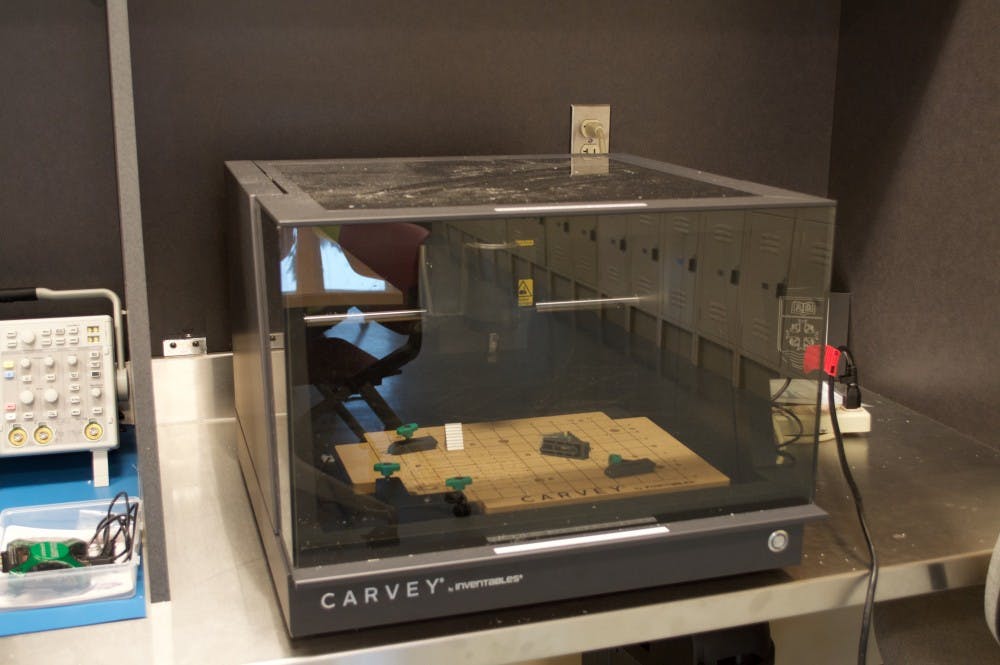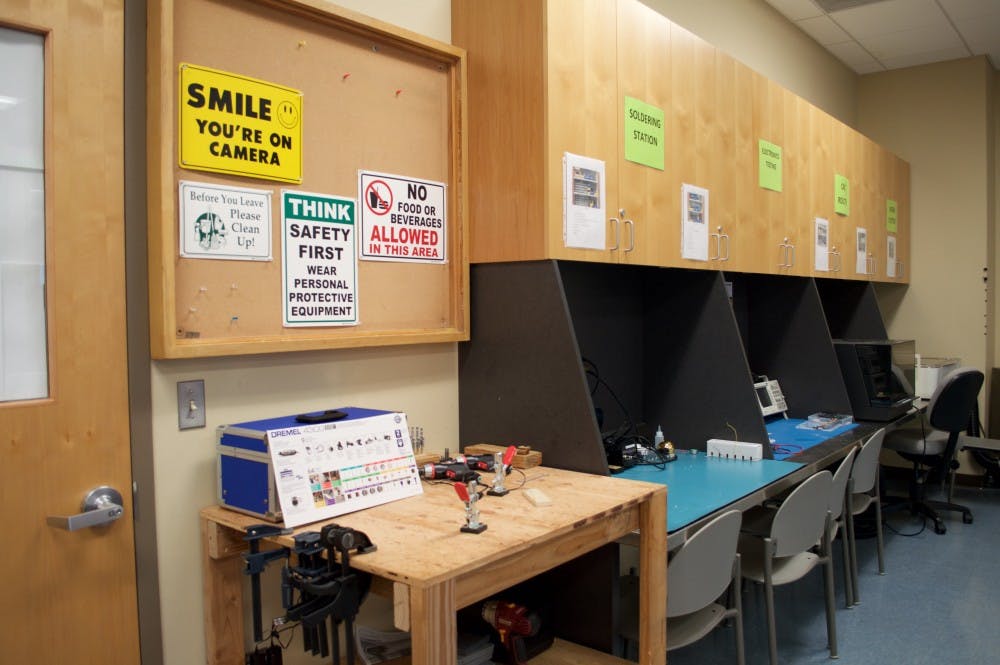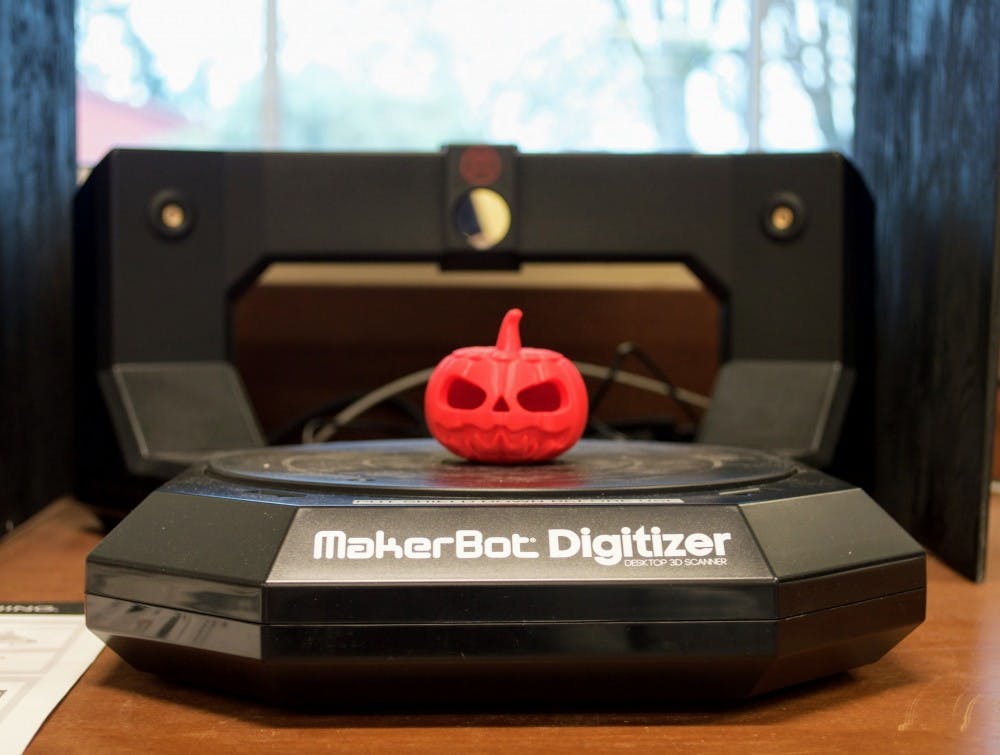Makerspaces, designated areas where students can go to design, innovate and create independent high-tech projects, have started to pop up on college campuses all over the United States. According to Carnegie Mellon, 49 makerspaces are available on college campuses across the country.
The University of Portland is now among them, thanks to a $25,000 grant from the Esco Foundation. The Pilot Space is located in Shiley 110 and is now open to UP students of all majors.
“Making things isn’t limited to engineers,” said Allen Hansen, engineering technician supervisor. “Everybody is welcome to come in, have fun and be creative,”
The Pilot Space is accessible to anyone who completes the training, which students can sign up for through the Pilot Space website.

A machine for carving different symbols and designs into various materials is available for use in the Pilot Space.
“The training is super basic. It covers what equipment we have, how to use it, and safety,” Hansen said. “Each piece of equipment has a video showing you how to use software, what to do and what not to do.”
After watching the videos, trainees have to pass a 5-10 question test, get a waiver signed by Allen Hansen and then they can gain card access to the Pilot Space.
The Pilot Space has a variety of brand-new equipment for students to utilize, including:
- GlowForge Laser cutter
- Carvery CNC router
- Electronic testing station
- Soldering station
- Drilling and cutting stations
- Two 3D printers
- MakerBot 3D laser scanner
“The GlowForge Laser is a new piece of technology,” Hansen said. “You can take a photo or a drawing that you did, throw it in there, and it scans it and then generates a digital tool path. Then you can etch or cut your design into wood.”
The CNC router is a computer controlled cutting machine that, according to Hansen, can make a wide variety of things such as pictures, signs, gears or usable parts, or even custom-made circuit boards.
“You can carve out tons of different colors of plastics,” Hansen said. “The plastics are two color, so when you carve through the first layer, the second color pops out.”
In fact, the LED sign outside of the Pilot Space was created using the CNC router.
Perhaps the most intriguing piece of equipment is the MakerBot 3D laser scanner. The scanner can take almost any image and create a digital 3D copy. This allows you to edit and reprint the item through another medium.

Pilot Space is a work area easily accessible to students where they can build and create different projects for class or fun. This space is located in Shiley and can be accessed by student ID cards.
In addition to the equipment, there’s even an electronic testing station where students can test out things that they’ve made to see if they’re working properly.
“There’s a little bit of everything, so you can do any small scale project and they have the resources to do it,” said Max Parker, freshman engineering major. “It’s just a really great learning experience in general.”
Hand tools, building supplies, and art supplies will also be available to students.
“Mainly I’ve used the laser cutter,” student assistant Lizzy Rowe said. “Last Christmas I had a group of kids come in and I made them little ornaments. I had them draw a design on a piece of wood and engraved their drawings onto cutouts of gingerbread men and snowmen.”
Now that the Pilot Space is open to all majors, students across different majors can collaborate and help each other on projects.
“The tables have plexiglass tops that you can write on with dry erase pens. You can go in as a group and brainstorm ideas out on the table,” Parker said. “It’s really easy to get together with people and bounce ideas off of each other.”
There will be four students on staff to help answer questions about equipment and software, but students can use the space at any time, even when no staff are present. The space is open whenever Shiley is open, which is typically 7 a.m. to midnight.
The Pilot Space will also have challenges, themes, and workshops on certain nights and weekends. The calendar can be found on the Pilot Space website or hung on the door.
For all questions regarding the Pilot Space, you can visit https://sites.up.edu/pilotspace
or contact Allen Hansen hansena@up.edu.








